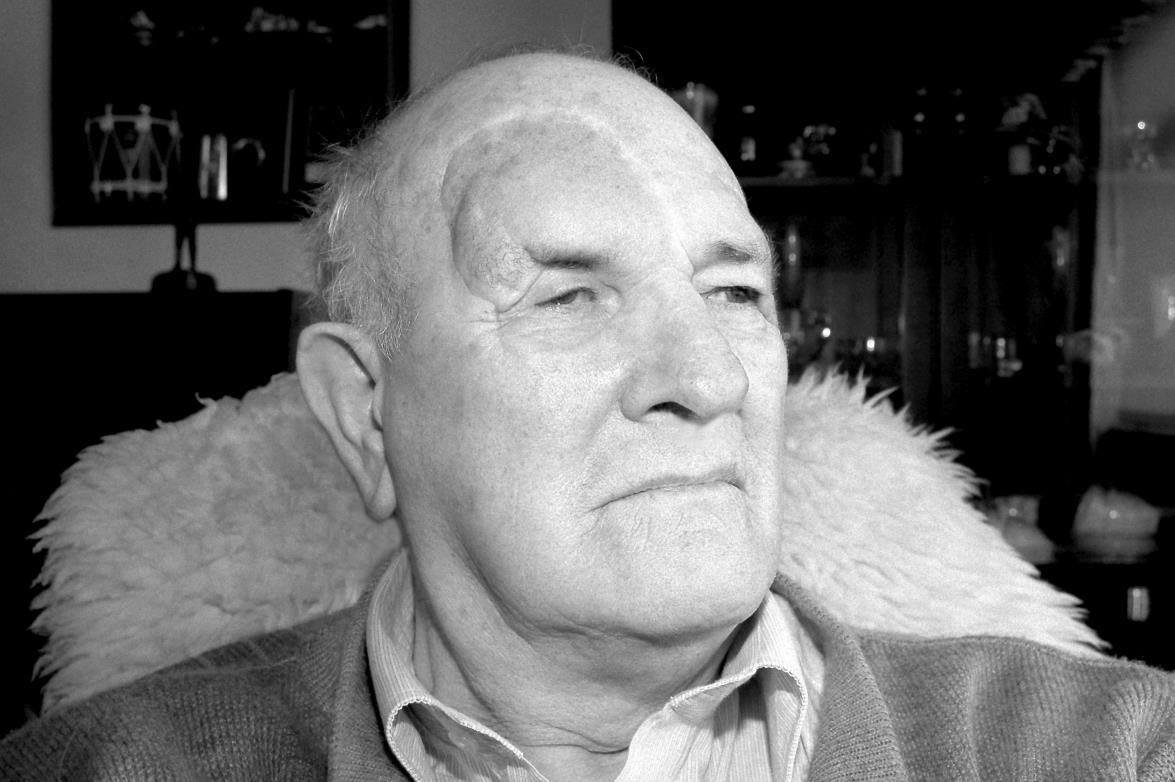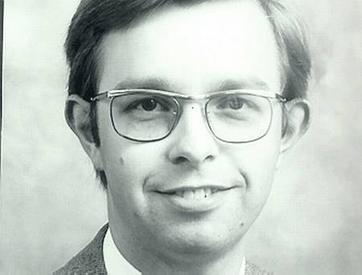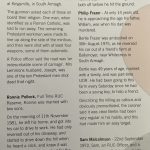Edgar Graham Anniversary
As we reflect this week on the murder of Human Rights Lawyer Edgar Graham 40 years ago we wonder what his thoughts would have been on the recent Legacy Legislation. We hear much about the killing of so-called human rights lawyers by loyalist paramilitaries, however little has been said and few inquiries have been launched into the serial murder of legal and judicial figures by the PIRA. Edgar Graham was first and foremost a lawyer, an academic and expert who pioneered human rights law in Northern Ireland. In his human rights work Edgar dedicated many hours to working on advancing an application to the European Commission of Human Rights on behalf of 32 applicants, most of whom were widows from the border areas of Northern Ireland and victims of what amounted to an ethnic cleansing of Protestant residents.
A Rising Star
Educated at Ballymena Academy, he graduated with a law degree at Queen's University Belfast (QUB) in 1976, and pursued postgraduate study at Trinity College, Oxford, from 1976. In 1975 Graham was vice-chair of the Queen's University Conservative and Unionist Association; in 1978 during his studies at Cambridge he joined the centre-right Bow group within the Conservative party. In 1979 he became lecturer in constitutional and European Community law at QUB and at the time of his death he was completing a doctorate. Edgar was called to the Northern Ireland bar in 1980, and swiftly established an outstanding reputation. He was assistant editor of the Bulletin of Northern Ireland Law, and in 1982 a fellow in European law at the Salzburg seminar. He made legal submissions to the European Commission of Human Rights on behalf of the widows of victims of terrorism. He published a pamphlet denouncing the Republic of Ireland's unwillingness to extradite terrorist suspects; at the time of his death he was completing another on Sinn Féin's links to paramilitarism, calling for the party to be proscribed and its leaders prosecuted.

He pioneered the use of new and innovative legal avenues to tackle terrorism. As an outspoken defender of the supergrass system, provided the court knew the terms of the deal between state and witness, he pointed to its effective use against the Italian Mafia, and attacked the ‘sophisticated propaganda campaign’ against it.
However it is for his visionary use of Human Rights Law and the European Court of Human Rights to challenge terrorism for which we remember him. He was the first to define and condemn the actions of the PIRA as abuse of Human Rights forming the European Human Rights Unit which represented the case of victims of terrorism for the first time presenting cases to the European Human Rights Commission and United Nations Human Rights secretariat. Alongside local MP Harold McCusker he focused on South Armagh to build his case and exposed the sectarian nature of the PIRA's campaign as well as at the collusion and complicity of the Irish Government in terms of their failure to extradite terrorists.
Speaking in the Northern Ireland Assembly months before he was murdered he was one of the first to use the term 'genocide' for what was happening to border Protestants. In an article in the Belfast News letter in February 1983 we read:
"IRA in ‘campaign of genocide on border’ THE Provisional IRA has mounted a campaign of genocide against the Protestant population in Ulster’s border areas, ‘the Assembly heard yesterday. South Belfast Official Unionist member Edgar Graham said the republican terrorist group was bent on eradicating a particular group of people simply because of their religion. He said many of the group's victims in the border areas had simply been killed because they were Protestants, not because they were members of the security forces. Mr Graham was putting forward a motion condemning Eire's attitude to extradition. It also called on the Government to press the Eire Government to introduce extradition and not to accept any substitute. Mr Graham claimed that extradition was the one major obstacie to the defeat of terrorism in Ireland and it was about time the Eire Government woke up to its responsibilities."
He championed the case of Edith Elliott whose husband George Elliott and brother Jack Donnelly had both been murdered along with over 30 other cases as they exposed the human rights abuses suffered by victims. It was obvious that framing the Troubles in terms of Human Rights was the most potent weapon against terrorism.

The light of that truth and with the effective operation of justice there was real hope that in the early 1980s we could have seen an end to the violence. As a campaign was launched in Europe, the United States and internationally with lawyers taking the lead there was a real hope of truth and justice securing a real peace here. We believe that such was the threat to terrorist organisations of this victims centred lawyer led approach that they determined to kill it at birth. The murder of Edgar Graham who was the brains behind the new strategy and the acceptance by the British Government of the Anglo Irish Agreement effectively killed the initiative. Sadly the unionist community were distracted for almost 15 years and in that time it was the terrorists who took up the tools and terminology of human rights. They literally killed Northern Ireland's human rights lawyer and stole his ideas. We have seen the sickening irony since of generations of lawyers twisting Human Rights to suit the cause and support the actions of terrorism.

It was only in 1998 with the Long March and the foundation of victims groups led by FAIR that real victims rediscovered the value of Human Rights to frame their case. Many of the same victims supported by Edgar Graham joined FAIR and the research around Human Rights abuses and Extradition which was was secured by Edgar in the 1980s was handed over to FAIR's Research and Policy Unit forming the foundation of our work. It was taken forward and formed the basis of what we termed LAWFARE and once more helped victims secure truth and justice. We pay tribute to the life and work of Edgar Graham, the vision he had of supporting victims and securing justice. We continue that work today and are proud to carry on what he started over 40 years ago. As his headstone and memorial in Stormont says
Attack upon the Rule of Law
We must remember that central to the PIRA terrorist strategy was an assault upon not only the police but the judiciary and legal profession. Attack on court houses and their staff as well as widespread witness intimidation and wholesale efforts to subvert the criminal justice system was part and parcel of their strategy. Other senior legal figures murdered include:
- 11th of October 1972 - Resident Magistrate William Staunton, a Catholic, shot dead on the as he drove his daughter, Sally-Ann, to St. Dominic’s convent grammar school on the Falls Road.
- 16th of September 1974, Judge Rory Conaghan, a Catholic, murdered at his home in front of his 9 year old daughter, Deirdre.
- 16th of September 1974, Resident Magistrate Martin McBirney, a Protestant, at his home in front of his family.
- 16th of January, 1983, Judge William Doyle was murdered by the IRA as he came out of Mass in St. Brigid’s Catholic church on Derryvolgie Avenue in Belfast
- 28th of April, 1987, the IRA murdered 73-year-old Appeal Justice Maurice Gibson and his wife Cecily by bombing their car at the border, with collusion between the IRA and the Irish police, An Garda Siochana
- 23rd of July, 1988, in a repeat attack the PIRA tried to murder Catholic Justice Eoin Higgins and his wife but instead killed the entire innocent Hanna family.
The story of his Life and Death
An excellent article and series of podcasts by the Belfast Telegraph have highlighted the the PIRA murder of Edgar Graham a true human rights lawyer whose vision for Northern Ireland was cruelly cut short. In his own words we hear him highlighting the plight of border farmers who themselves lived under threat of assassination. In the chilling account of the murder of this bright young man.
Edgar Graham was just 29 years old when the IRA gunned him down on the street at Queen’s University in south Belfast.
The young law lecturer and unionist politician had a brilliant mind and was widely believed to be a future leader of the Ulster Unionist Party. David Trimble said he’d never have been Ulster Unionist leader if Edgar had lived.
Forty years after a crime which even by the standards of the Troubles shocked Northern Ireland, Sam McBride investigates why the IRA targeted him, whether he was set up by a colleague, and where this lost leader of unionism might have led Northern Ireland.
In this BelTel special documentary, Edgar’s friend Dermot Nesbitt, who was standing beside him when he was killed, revisits the scene for the first time in 20 years as he and others who knew Edgar well tell his story.
Killing Edgar: The IRA murder of Edgar Graham (part one)
Edgar Graham didn’t stand a chance. A gunman approached him from behind, shooting him dead just yards from the law faculty at Queen’s University where he worked.
At just 29, he was one of the most outstanding politicians the Ulster Unionist Party had ever produced and overwhelmingly likely to be a future party leader.
How would he have changed Northern Ireland if he had gone on to lead unionism?
The IRA immediately admitted responsibility for his murder, but why was he singled out?
And Sam McBride tracks down a fellow law lecturer accused of helping the IRA to target Edgar. He hears his first direct comments on the accusations in the 40 years since the killing.
Festival of Remembrance 2023
FAIR had a party of 57 attend the Festival of Remembrance in Belfast last night. some members drove there due to restriction in coach 53 seater. They all enjoyed a meal in a Local hotel making this a special evening together. Chairman and wife along with befriending coordinator and Project Manager enjoyed a great view seated in the VIP seating. We were proud to see one of our victims Krystal taking part in the service with a presentation to Lady Brookborough. It was a tremendous evening with fully packed programme of music and dance followed by Service of Remembrance. Excellent and much appreciated event enjoyed by everyone. Thanks and appreciation to the RBL for all their hard work in getting such a great programme together.

Sammy Hamilton's Story

Sam Malcolmson
Sam had joined the police force in 1969 as a young man and because he had served only three years when he was shot, he has suffered with life changing injuries for five decades surviving on the lowest pension. He has been involved with FAIR since 1998 often at the forefront of campaigns to expose the injustice and inequality faced by many former police officers. His advocacy work for victims has spanned the decades when he founded the Disabled Police Officers' Association (DPOA).

“Pain can leave you sometimes very depressed and in a bad mood” His family have had to live with this, but he is very grateful of their support over the years. “To date we’ve survived, a lot of that is down to the guidance of my wife” Saml Malcolmson
He has been a consistent voice for victims often telling his own painful story to highlight the wider suffering of victims and the absence of justice or truth from the PIRA who were behind the attempt to murder him and his colleague in 1972. FAIR featured Sam's story in their powerful video presentation of victims stories.
Injured In The Troubles - Sam Malcolmson from Northern Visions NvTv on Vimeo.
A powerful video interview with Sam recorded for Our Generation Injured In The Troubles Samuel Malcolmson
Marie Breen-Smyth, Associate Dean International, University of Surrey, talks to Samuel Malcolmson about the injuries he received in a terrorist attack and how it’s effected his life.
In 1972 Samuel Malcolmson was stationed in Crossmaglen in South Armagh when he and a colleague drove into an ambush, they were both shot in the back but they manged to make it back to their Police Station because of the driver, even though he too was shot “I do owe my life to him because he was able to control the car to the police station, I think he was just about to pass out, he actually crashed into the gates”
He remembers being injected with morphine by the local doctor. “I didn’t think you could suffer so much pain, and then I can remember on the way down to the hospital in the ambulance the attendant was trying to keep us on the plinths as they were going around the twisty roads and then after that I don’t remember anything”
Samuel was airlifted to the Royal Hospital in Belfast were he spent nine months. “My two legs were out of action for quite a while, but then lucky enough one of my legs came back to full use but the left leg is now left with paralysis, I excepted the fact that somebody shot me, I was a legitimate target in his eyes but the one thing I could never except was weeks later when my father had to come up to the hospital and tell me that my mum had dropped dead at my bedside, that was the hardest thing to take and to this day him and I can not talk about this incident”
Samuel now suffers from severe back pains and shooting pains up and down his leg, he has to use elbow crutches to walk long distances. “The home and the car are my life, as far as walking is concerned I would do as little as possible because it triggers the pain”
Samuel still thinks about the man who did this to him. “I still want to meet the person who pulled the trigger and I’m convinced I know him, circumstances would narrow it down to a couple of people, there’s not a day in life that goes by were I don’t think of that person, when he and the person with him shot me. The following day when my mum dropped dead beside my bed, did he think ‘I’ve gone to far here I didn’t mean for an innocent person to suffer’ I was a legitimate target in his eyes but did his conscience have a twinge and did he think, ‘There’s a family left now without a mum’ or did he think ‘No that’s even better than I thought, I went out to get two cops and I’ve got three people, I’ve ruined their lives in different ways’ so I still want to meet that person, I want to sit eye to eye and talk to them”
Although it has effected his everyday life, Samuel is still determined to keep a level of independence.








